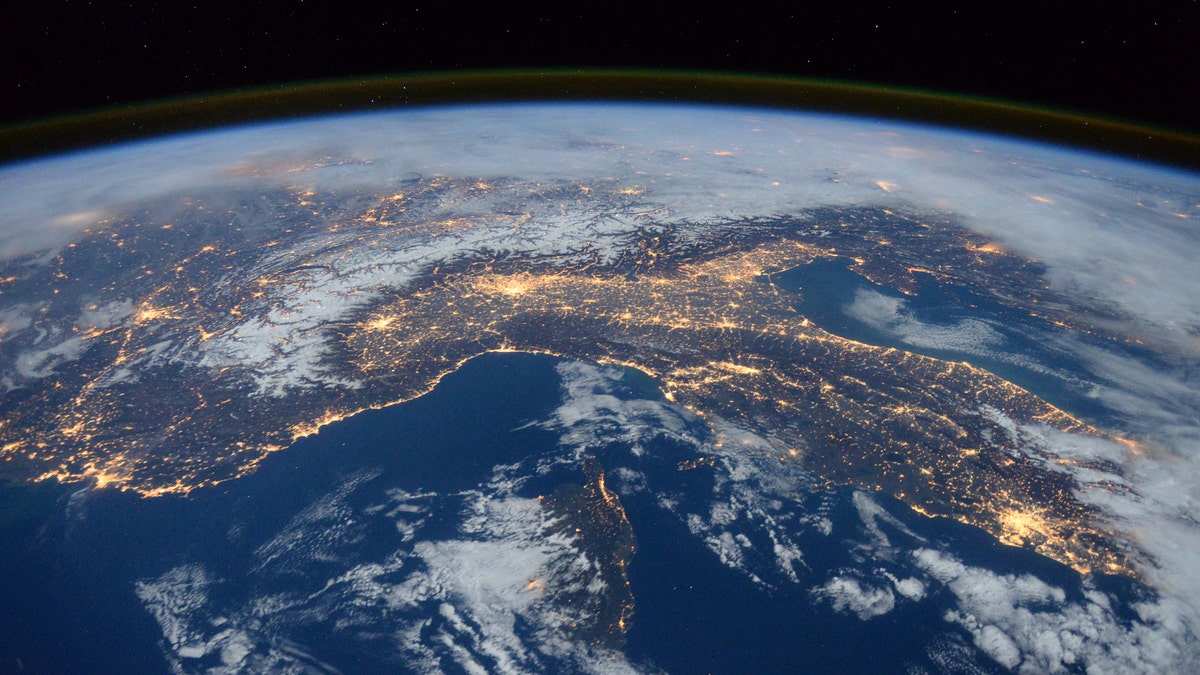
File photo: A photo taken by Expedition 46 flight engineer Tim Peake of the European Space Agency (ESA) aboard the International Space Station shows Italy, the Alps, and the Mediterranean on January, 25, 2016. (REUTERS/NASA/Tim Peake)
Journeying to space is an honor bestowed upon a fortunate few, but it comes with some seldom-discussed side effects. For example, in the absence of gravity, the human body tends to expand—painfully. Astronauts' faces swell up due to excess bodily fluids that no longer have to contend with gravity—a condition known as "the Charlie Brown effect"—while forcing all sorts of liquids out their various face holes. Grody.
These occasionally gross and painful conditions are inescapable consequences of transplanting the human body into an alien environment. And they're perfect examples of how humans are NOT designed to live and work outside Earth's atmosphere. But they generally only last "a day or two" and are small prices to pay for a trip to the cosmos, right?
There's still much we don't understand. NASA astronaut Scott Kelly lived aboard the International Space Station (ISS) for 340 days (the record belongs to Russian cosmonaut Valery Polyakov, who racked up 438 days) and the effects of his stay included bone density loss of 1.5 percent per month, heart shrinkage (the heart shrinks since it doesn't have to work as hard), radiation exposure (no protective ozone layer), vision problems (eyes adapt to operating in gravity), and even skin irritability (resulting from not constantly coming into contact with things).
While Captain Kelly's prolonged stay resulted in a lot of science, one year for one individual is still a very limited data set—especially if you consider the time necessary for a human to travel throughout the solar system with current technology.
More From PCmag
As space exportation and colonization become increasingly viable prospects, we are forced to confront a great unknown: what will happen to our bodies after decades in space? We're kind of rolling the dice on this one, and what happens on the other side is anyone's guess. Things might even get super weird.
"Would we, in the future, even have skeletons anymore if we were up in space for a long time," pondered NASA astronaut Scott Parazynski, who stopped by PCMag's offices for our Q&A series The Convo to talk about his new memoir The Sky Below.
Aside from his five journeys to space, Parazynski is a medical doctor who specializes in space physiology and is the co-founder of Blue Marble Space, which aims to use technology to help humans explore space. "That's such a crazy thing to think about it. But we have skeletons here on Earth to resist gravity. But without it, over many generations, we'd probably evolve in some crazy ways."
This is not to say that astronauts or first-generation colonists are in immediate danger of turning into boneless goo. But it's not insane to question if their descendants will be. When placed in an alien environment, evolution can take some weird turns. Consider the Mexican tetra (AKA the "blind cave fish"), which long ago found its way into a lightless subterranean environment and—over many generations—eventually lost its eyeballs as they became unnecessary drains on resources. Might a similar dropping of dead biologic weight occur in humans on a future space colony? Short answer: We have no friggin' clue.
Now, there are things like centripetal motion, which can recreate gravity in a weightless environment (think A Space Odyssey or Interstellar), and could be implemented for any long-term human space habitat. However, the more immediate concern regarding gravity's effect on our bodies will be in an environment like Mars, where gravity is only about a third as robust.
Over the generations, human bodies living in low-gravity locations like the Red Planet will change character. This may sound like some inconsequential sci-fi pondering, but a human civilization in space is closer than many realize. The good news is we should be able to engineer our way around any problems we face.
"Anything that we humans set our mind to we can usually solve. And that seems like a very solvable problem," explains Parazynski. "You've seen all the artists' renditions of future Mars colonies with these modules on the surface of Mars, but they'd probably be buried for radiation protection. And we could do hydroponic plant growth—we can extract water from the soil. There's actually a lot of water on Mars. We can then generate oxygen to breathe. We can do a lot there. But it will take infrastructure and time. And by the way, send money."
I don't think that future colonists will become formless jelly-people, but the fact that we don't know for sure shows just how many unknowns there are about humanity's ability to survive outside Earth's protective bubble. It's about time we at least start to consider what our weird space future will look like.
The Convo is PCMag's interview series hosted by features editor Evan Dashevsky (@haldash). Each episode is broadcast live on PCMag's Facebook page, where viewers are invited to ask guests questions in the comments. Episodes are then posted on our YouTube page and available as an audio podcast, which you can subscribe to on iTunes or the podcast platform of your choice.
This article originally appeared on PCMag.com.
